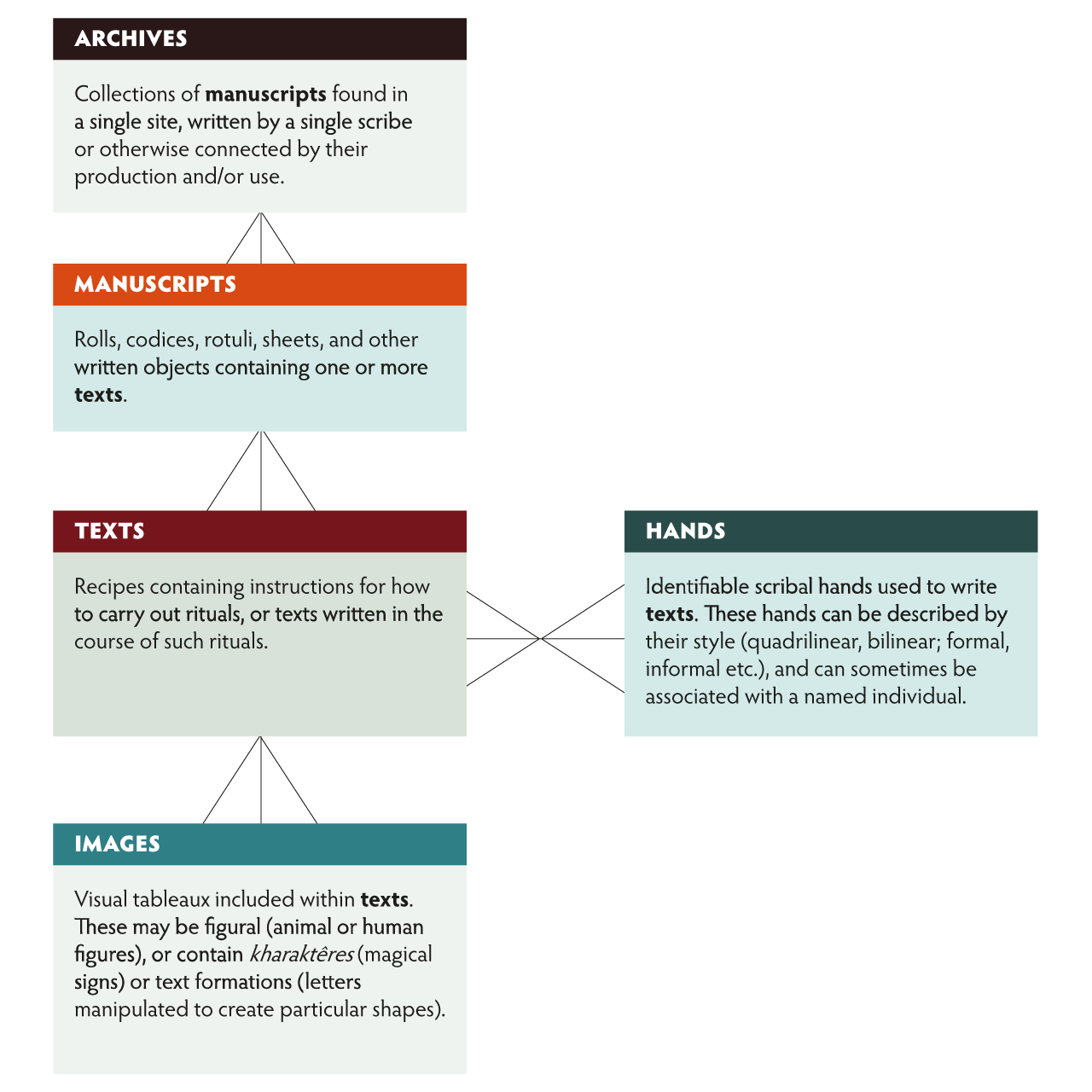
The Kyprianos Magical Text Database is intended to serve as the go-to resource for the corpus of magical texts known from Roman, Byzantine, and Islamic Egypt. Beginning with the corpus of magical texts written in Coptic, but ultimately projected to include those written in earlier forms of Egyptian, as well as Greek, Arabic, and other languages, Kyprianos will be online, continually updated, and free-to-use. The database will contain information on each individual surviving manuscript, whether on papyrus, parchment, ostraca or tablets, in the form of bookrolls, codices, loose leaves or amulets. The database will ultimately include transcriptions and translations of every “spell” included in these manuscripts, as well as information on higher-level groupings (archives containing groups of manuscripts), images and designs included in texts, and the hands of the scribes who copied them. Kyprianos will thus bring together for the first time the extant corpus of magical texts and manuscripts in a way which allows both fast and in-depth study.

This project builds upon previous work, notably that of Franziska Naether on Trismegistos Magic, which contained 362 Coptic magical and ritual manuscripts, and on the checklist of published Coptic magical texts created by Roxanne Bélanger Sarrazin, which contained 304 manuscripts.
In the initial stages of the database, we will focus on providing full the meta-data for each manuscript. The interface of Kyprianos will allow users to navigate between the levels of archive, manuscript and text, and to search within these using criteria such as medium (e.g. papyrus, parchment, or ostracon), provenance (Thebes, the Fayum, or simply Egypt), date range, and text type (e.g. love spells, curses). Users will also be able to construct their own corpora of texts by searching through a series of subject tags, such as cultural influences (e.g. Egyptian, Greek, or Christian) and material utilised in the ritual practices (different animals, plants and liquids). As the database develops, we will provide both transcriptions of the texts in their original language – beginning with Coptic – as well as translations into English. Comprehensive bibliographies for each entry will provide users with a route into the wider literature on the texts themselves, and how they have been discussed in previous studies of magic.
